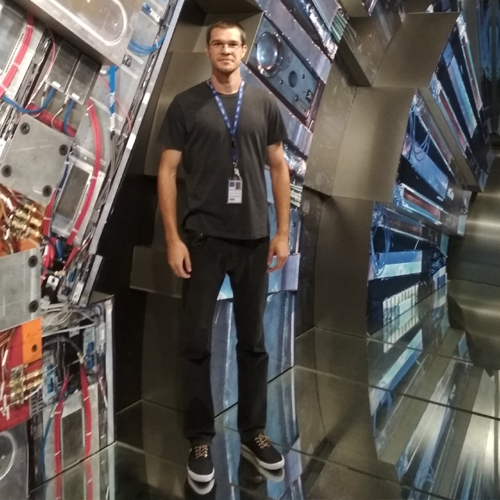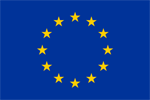CERN | My story

photo from the private archive
WOJCIECH FLIEGER, MSc
From the first moments at CERN, you get the feeling that this is a research centre. The rooms are usually open, there are discussions all around… It might seem like this should not be surprising for someone associated with a university, but the atmosphere there is completely different.
|
CERN MY STORY
|
I started my adventure with theoretical physics during my Master’s studies. At that time, I was dealing with the physics of neutrinos, and more specifically, with the application of matrix analysis to the study of the seesaw model. I decided to continue my education at the Doctoral School at the University of Silesia, and I am currently in the fourth year of my studies. My PhD thesis is in theoretical physics, more specifically in the theory of elementary particles, and focuses on the study of the mechanism of neutrino mixing and the possibility of detecting sterile neutrinos in future particle accelerators. My research is carried out at the August Chełkowski Institute of Physics in the research group led by Prof. Janusz Gluza “Theory and phenomenology of particle physics”. This research is carried out in several directions, emphasizing precise calculations of higher-order perturbation effects for electroweak observables at the LHC and future lepton accelerators. In particular, we focus on activities related to the FCC-ee project at CERN. During my studies in 2018-2019, I had the opportunity to work for several months at CERN. My first visit was related to a project carried out in Prof. Gluza’s group, which included research on methods for calculating multivariate Feynman integrals and participation in a workshop on precise calculations for future colliders, where I presented my research results. The visit and scientific work at CERN was interesting and very developing – scientifically and otherwise. The opportunity to participate in scientific work directly at CERN allows you to see science from a different perspective. This is especially important for research in theoretical physics, fundamental and fascinating research dealing with the development of mathematical formalisms and computational protocols to describe all aspects of objects found in the world around us and their interactions. But on the other hand, it’s a type of research where most of the work is based on long hours of calculations, simulations, and optimisations of specific parameters. The possibility to see “live” that some solutions or theorists’ concepts are taken into account or implemented in specific experiments using large research equipment is very motivating. A few thoughts about my impressions of visiting CERN. The first thing about CERN that I remember is that I went in and couldn’t leave, but this is a somewhat isolated case. Users of the CERN infrastructure are given an electronic entry card upon arrival that entitles them to enter strictly defined areas – users may have cards that allow access to different places. This time the card did not work properly. As a result, I had more time to explore CERN. Whereas the second case probably affects more people. Let’s start from the fact that when you enter CERN, you get a map. You think that CERN is big, so maybe a map is necessary. It turns out that a guidebook would be more helpful, because the arrangement and numbering of buildings are surprising, and to find your way around at first you just have to ask someone how to get to a particular building. Back to the serious stuff. From the first moments at CERN, you get the feeling that this is a research centre. The rooms are usually open, there are discussions all around… It might seem like this should not be surprising for someone associated with a university, but the atmosphere there is completely different. |
|





